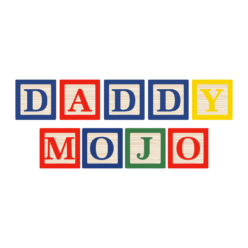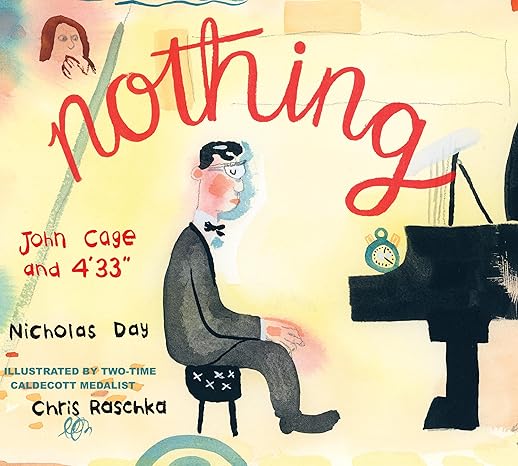Prior to Nothing I had not heard of it. The concept of doing nothing, like laying on the sofa watching sub-par movies of listlessly waiting for something to do has long passed us by, having coincidentally happened when we had our first child 15 years ago. In this case, Nothing: John Cage and 4’33” is an illustrated book about a composer and one of his most unique pieces. It was a composition that lasted for four minutes and thirty-three seconds and was completely silent.
It happened in 1952 when pianist David Tudor entered the Maverick, an open-air concert hall located just outside of Woodstock, Pennsylvania. He went into the venue prepared with the piece that Cage had written, which was comprised of nothing. Tudor checked the clock that was on his piano, closed and opened the fall board and fall board on the piano, then stood up at the end of the piece. I immediately went to the internet and before you could say someone purchased a banana that was duct taped to the wall for millions of dollars, I found my answer.
This vacant composition exists, and after thinking about it my opinion of it improved somewhat. It’s not entirely a banana taped to a wall masquerading as art. 4’33” has been performed in different concert halls by orchestras, as well as rock bands. This is a legitimate thing and is branded more in league with avant garde art, as it is with music. It’s the sound of silence that lies within the art because, like the river flows, it never is exactly the same as it is now. Someone will cough, a building will creak, chairs will jostle or a person’s leather coat might bend. There will be something that makes noise each time 4’33” is performed and every one of those times will be different. It could allow audience members to clear their head, think about life’s regrets and even get angry about the fact that they were tricked into seeing a silent musical composition.
That’s the background that Nothing is set against and unless you’re conversationally familiar with classical music it’s new to you. As an illustrated book, Nothing is very beautiful to look at and weaves a surprisingly complete narrative about the pianist who playing nothing. It establishes that Tudor was a talented pianist and that Cage’s father was an inventor, a fact which might’ve helped his creativity.
Cage created musical compositions too. They were passionate, sometimes played with unordinary instruments and some more abstract than others. It bordered on performance art somewhere in the vein of, Pianosaurus Andy Kaufman and wrestling, but with more artistry and less comedy. Nothing is an illustrated book about one of these compositions. Assuming that the audience knows that this was indeed a real thing, it can also be a thought-provoking book.
The power of silence, of no sound bothering your ears, especially when you go someplace where you’re expecting it, jars your senses. I’m being punked. This has wasted my money. What nonsense is this? This is stupid. They could even be the things that your young audiences will say or think to themselves after they have Nothing read to them. It’s an illustrated book that gives audiences a chance to think. I know, abstract thinking is not what you signed up for when you’re reading a book to young people.
However, the illustrations in Nothing are by Chris Raschka, an illustrator whose style children will love. It’s soft, dreamy and allows the succinct text by Nicholas Day to tell a story that you don’t think you’ll enjoy. Read Nothing with an open mind. It would also be helpful if the adults would familiarize themselves with the story first, and then read it aloud. It’s a case of truth is stranger than fiction, but in this case the truth is a welcome pause that we all could benefit from.
Nothing: John Cage and 4’33” is by Nicholas Day with illustrations by Chris Raschka and is available on Neal Porter Books.
There are affiliate links in this post.





 Facebook
Facebook Twitter
Twitter Flickr
Flickr GooglePlus
GooglePlus Youtube
Youtube